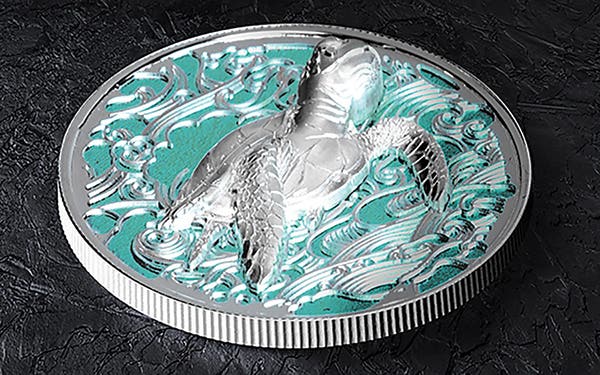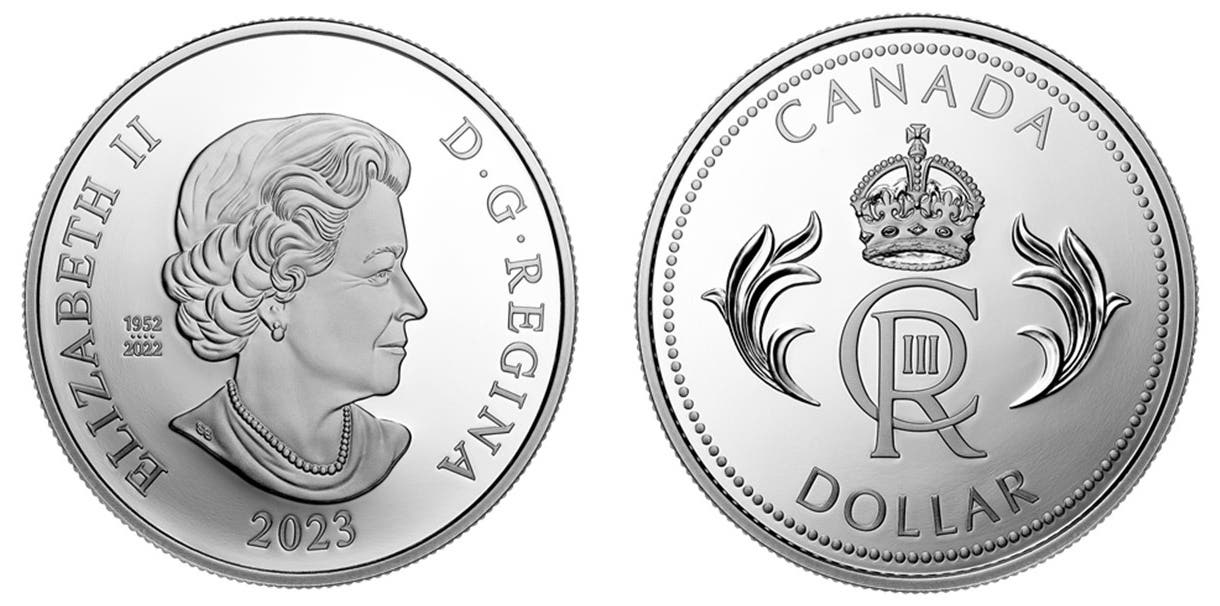Coinage of Gibraltar
by Fred Glueckstein Gibraltar is located at the southern tip of the Iberian Peninsula at the entrance to the Mediterranean. It is bordered to the north by Spain and has…
by Fred Glueckstein
Gibraltar is located at the southern tip of the Iberian Peninsula at the entrance to the Mediterranean. It is bordered to the north by Spain and has an area of 2.6 square miles. The Rock of Gibraltar dominates its landscape. At its foot is Gibraltar’s only city, named Gibraltar, which is home to over 30,000 people, primarily Gibraltarians.
I had an enjoyable time visiting this British Overseas territory with my wife, Eileen. Particularly, seeing up close what are commonly called the Barbary Apes that live on the upper Rock. Actually, the Barbary Apes are not apes but Macaques (Macaca sylvanus), which are tailless monkeys. Seeing the friendly and inquisitive macaques up close on a sunny autumn day was a magnificent experience. They were on the rocks overlooking the strait that separates Gibraltar from Morocco in Africa.
Coins of Gibraltar
Gibraltar, an important base for the Royal Navy, piqued my interest in its history, and its coins that I now collect. Gibraltar became a British Colony when Admiral Rooke took the Rock for England in 1704, when he led an Anglo-Dutch force in the Spanish War of Succession. The Treaty of Utrecht of 1713 ceded Gibraltar to the British Crown in perpetuity.
Token Coinage: 1802-1820
When Gibraltar became a British Colony, its monetary system was comprised of privately issued token coinage. The issuers included Robert Keeling, Richard Cattons, and James Spittles. The issuer’s names appeared on the obverse. During the period 1802 to 1820, token coinage was issued in Copper, and 24 Quarts (Quartos) equaled 1 Real (a unit of currency in Spain for several centuries after the mid-14th century). Almost all the coinage depicted a lion holding a key seated left on the obverse, and a castle with three towers on the reverse. Interestingly, the reverse of the 2 quartos coin issued in 1813 by Richard Cattons depicted a crown above the denomination within a wreath.
Regular Coinage: 1841
The first circulating coins to be minted and used in Gibraltar were issued in the reign of Queen Victoria. In 1841, Gibraltar dispensed regular coinage in denominations of 1/2 Quart, Quart, and 2 Quarts. On the obverse, the Copper coinage depicted the head and neck of Queen Victoria facing left. The inscription read: VICTORIA D:G: BRITANNIAR: REGINA F:D and date.
The reverse showed a castle with three towers. Above the castle read GIBRALTAR. Underneath the castle was a key facing downward to the printed denomination, i.e. TWO QUARTS.
The Currency Notes Act: 1934
The Currency Notes Act of 1934 conferred on the Government of Gibraltar the right to print its own notes, and the obligation to back and exchange each printed note with sterling reserves at a rate of one pound to one-pound sterling. Although Gibraltar notes are denominated in "pounds sterling,” they are not legal tender in the United Kingdom.
Gibraltar's coins are the same weight, size and metal as British coins, although the designs are different, and they are occasionally found in circulation across Great Britain. British coins and Bank of England notes circulate in Gibraltar and are universally accepted and interchangeable with Gibraltarian issues. Until Britain and Gibraltar changed to the decimal system in 1971, Gibraltar’s monetary system was as follows:
4 Farthings = 1 Penny
12 Pence = 1 Shilling
2 Shillings = 1 Florin
5 Shillings = 1 Crown
20 Shillings = 1 Pound
Decimal Coinage Introduced: 1971
In February 1971, Britain changed to the decimal system, and after hundreds of years its everyday currency changed overnight. On Feb. 14 1971, the Pound was made up of 100 New Pence.
Pence Coins
Gibraltar introduced the New Pence in 1971. The 25 New Pence had Queen Elizabeth on the obverse, and the Barbary Ape facing left on the reverse. Afterwards, Gibraltar minted the Pence. The obverse of Gibraltar’s Pence coins depicted Queen Elizabeth II wearing a crown or tiara.
Various designs on the reverse of Pence coins depended on the denomination. The round, or 7-sided shaped coins included such designs as the Barbary partridge on the Penny; Lighthouse on Europa Point on the 2 Pence; Barbary Ape on the 5 Pence; Moorish castle on the 10 Pence; Our Lady of Europa Statute on the 20 Pence, and Shield within wreath of apes and laurel on the 25 Pence.
Crown Coinage
With Queen Elizabeth II the ruler of the United Kingdom, Gibraltar issued a Crown piece from 1967-1970 depicting her. The coin was minted in Copper-Nickel, and Silver crowns were released in Frosted Proof and Proof. The obverse showed a bust of young Elizabeth facing right while the reverse depicted a castle (The Arms of Gibraltar). A key below the castle divides the date and points to the denomination.
The mintage of the Crown in 1967 was 125,000. From 1968 through 1970, mintage averaged about 40,000.
In the years that followed, Gibraltar issued numerous Crowns in Copper-Nickel, Silver, and Gold. The Crowns had theme designs that included famous people, literary figures, Royalty, historical events, and sports. The Copper-Nickel and Crowns are particularly good coin additions, due to availability and affordability.
Currency in Gibraltar Now
Today, the Gibraltar pound is the currency of Gibraltar. It is fixed to, and exchangeable with, the British pound sterling at par value. The central bank controlling the Gibraltar pound, with responsibility for minting coins and printing notes, is the Government of Gibraltar.
One of my favorite coins issued lately by the Gibraltar National Mint is the Evacuation 75th Anniversary Silver Coin, which commemorated the evacuation of Gibraltarians during World War II.
The story of Gibraltar’s evacuation is one of many untold stories of the Second World War. When Gibraltar had to be converted to a fully-fledged fortress, which Hitler was planning to capture with Spanish assistance, the British government ordered the evacuation of women, children, the elderly and infirm to French Morocco. The commemorative Evacuation 75th Anniversary Silver Coin was issued to remember the hardships endured by the many Gibraltarians of that time.
It has been written of Gibraltar that: “Throughout the ages, the Rock of Gibraltar has cast a powerful first impression on those that have seen it. Whether approaching by land, sea or air, the Rock looms stark and isolated as it towers above the region. At the neck of the Strait of Gibraltar, it is the final signpost before the Mediterranean joins the Atlantic and thus has been an important site throughout European history.”
Collecting and researching coins of Gibraltar is an excellent way to learn of this historic British Overseas Territory, particularly the famous Macaque, known over time as the Barbary Ape.








